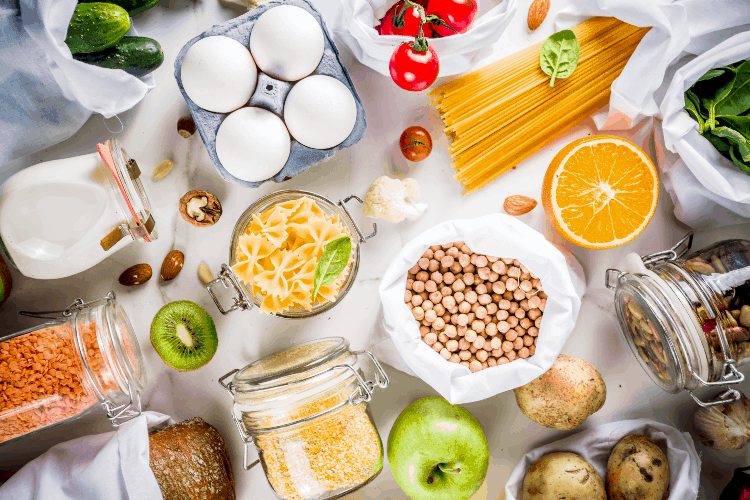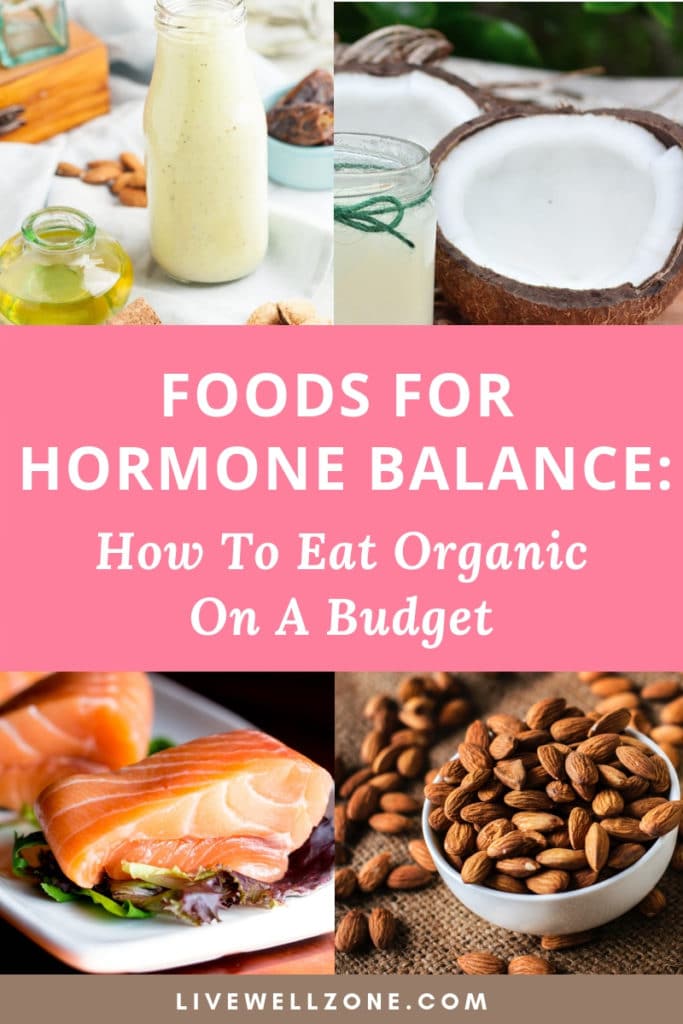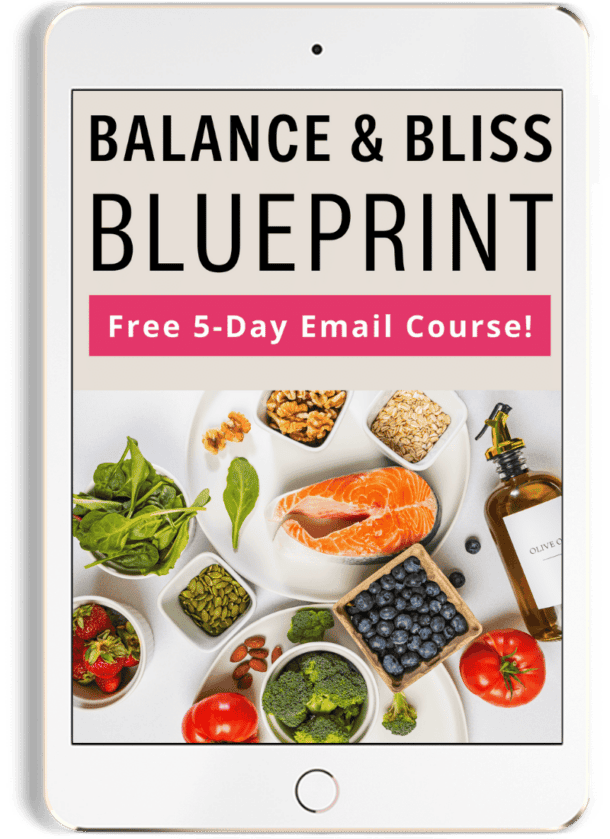
Organic food is important for natural hormone balance..but how can you eat organic on a budget so that it actually works for you?
In this post I am sharing all of the tips that I personally use to eat 100% organic without going broke!
9 TIPS FOR EATING ORGANIC ON A BUDGET
1. Join a Membership Warehouse Store
One of the best things you can do to make organic food more affordable is to join a membership warehouse store.
The membership more than pays off for itself!
I have a basic Costco membership which runs me $60.00 every year (as of 2018) and here’s a sample of what I can get with my membership:
- 3 lbs of wild caught Alaskan salmon for $32
- 12lb bag of brown rice for $12
- 84oz of unrefined, coconut oil for $16.99
- 6 organic mangoes for $5.49 – 6.99 (depending on delivery)
- 2-pack of organic peanut butter for 9.99
Buying equivalent quantities of these same foods at mainstream health food stores would cost me twice, and in some cases, three times as!
2. Make Your Own “Fast” Foods
Chips, pasta sauces, tomato sauce, almond butter, etc. are all available in organic form but also tend to be super pricey.
For example, I have found a 10 oz jar of organic almond butter for a whopping $21.00!
And a 24 oz jar of organic pasta sauce (with no added sugar or preservatives) usually runs about $7.00 or more.
A 15 oz can of beans costs about $1.80 or more depending on the brand.
To keep your budget reasonable, you’re better off investing in a good food processor so that you can start making your own nut butters at home.
Once you have a food processor, you can make all the nut butter you could ever desire at a more affordable price.
In the long term it’ll cost you much less money than spending $21.00 each week for a new jar of almond butter, for example.
Making your own pasta sauce will also cost you less money when you buy your own tomatoes, onions, some garlic and the spice(s) of your choice.
Not to mention homemade pasta sauce is fresher and delicious!
3. Eat More Plants
Have you looked at the price of organic beef, chicken, eggs and the like?
Whew!
You’d have to rob a bank to eat clean animal products.
In order to comfortably eat organic on a budget, one thing that helped me was switching to a mostly plant-based diet.
And when I do I eat animal products, it’s mainly eggs (3 to 5 times a week) and fish (1 to 2x a week).
I’ve been eating this way for 4 years and I love it because the simple fact is this: a plant-based diet is just so much healthier.
In fact, science keeps us reminding us of this fact.
Plus, there are so many great cookbooks and recipes to play with, and even things like vegan ice cream can be made at home in just a few minutes!
4. Make Smart Swaps
Yes, almonds are by far the most superior nut when it comes to their health benefits.
But buying organic raw almonds at $12.00 a pound or paying $21.00 for a 21 oz jar of almond butter just isn’t feasible for everyone.
On the other hand, you can get two 28 oz jars of organic peanut butter (with no added sugar, oils or preservatives) for $9.99 if you have a membership at a place like Costco.
And when it comes to health benefits, peanuts are very heart healthy and they provide a good balance of healthy fats, which we need.
5. Buy Produce That Is In Season
If your fresh food consumption consists mainly of mangoes, pineapples, fresh coconuts and guavas, then your grocery bill will definitely be very high.
These items are usually imported and as a result, the price point is always higher.
For example: one coconut costs $5.99 at my local health food store.
If you’re in a household of 3, that’s over $15.00 just for a single day’s serving!
When buying produce stick to what’s in season for your region. You’ll always get a better price.
6. Use Frozen Fruit As A Backup
Nothing compares to fresh fruit when it comes to nutritional value.
But sometimes, fresh organic fruit can be pricey.
On the other hand, frozen organic fruit can come at a much more reasonable price.
Also, research shows that when the freezing process is done correctly, frozen fruit still retains a good amount of its nutrients.
Last but not least there is the convenience factor when it comes to frozen fruit.
You can just pop them in a blender whenever you need to make a smoothie or healthy ice cream.
No peeling required!
NOTE: some brands put preservatives in frozen fruit. Check the ingredients to make sure that the only ingredient listed is the fruit and nothing else!
7. Buy Spices In Bulk
Organic spices can easily add weight to your grocery bill.
For example, a 1.6 oz bottle of organic, ground ginger can cost approximately $4.50.
But if you buy the same spice from the bulk section of a store, you can get a 5 oz bag for just under $5.00.
That’s 3 times as much ginger for just 50 cents more than the 1.6 oz name brand bottle.
One thing to keep in mind is that spices lose their potency with time.
So, buying spices in bulk is best if you cook a lot.
You’ll definitely get your money’s worth!
8. Follow the “Dirty Dozen” & “Clean 15” Lists
If buying 100% organic/non-GMO simply isn’t financially feasible for you right now, start with the Dirty Dozen and the Clean 15 lists.
Developed by the Environmental Working Group (EWG) these lists tell you which fruits and veggies have the highest levels of pesticide residue (Dirty Dozen) and which ones have the least pesticide residues (Clean 15).
Since the items on the Dirty Dozen are high in pesticides, you’re better off spending your organic food budget on those items.
And then you can buy the items on the Clean 15 list in their conventional (non-organic) form.
9. Visit Farmer’s Markets
This can vary from one region to another but…because farmer’s markets are focused on small, local producers, you can often find great quality organic food at reasonable prices.
Just be aware that many local farmers can’t afford the fee that is needed to get an official USDA Organic seal.
But that doesn’t mean that they’re not following organic farming practices.
Ask them questions about their farming practices (they’re usually friendly and chatty) and you’ll be able to learn who’s the right vendor for you.
Making the decision to buy organic can be intimidating and there’s a lot to consider.
The tips in this article are true and tested.
I’d love to hear how they work for you, as well as any tips of your own that have worked for you.
Leave a comment to continue the discussion 🙂



